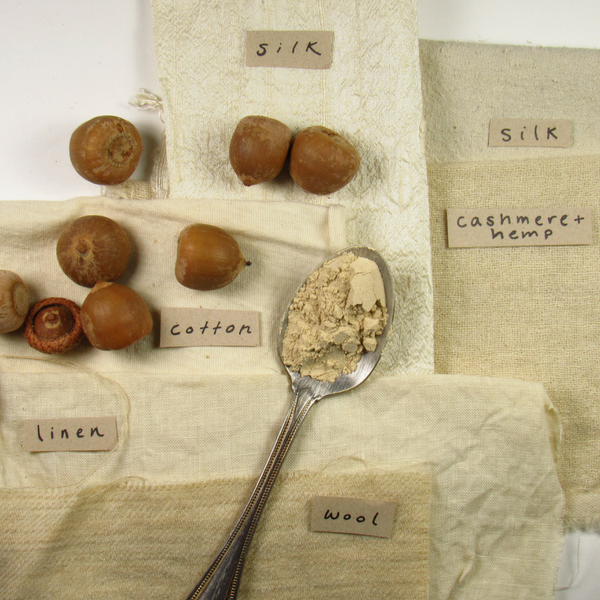This week: Making your own color recipes, the difference between tannin and mordant and how we get “good” color
Every week, we are emailed with questions from our natural dye community asking simple and complex questions that we thought might be worth sharing. Of course, all of your burning questions are answered by natural dyer in chief, Kathy Hattori, Founder of Botanical Colors.
Can you help me better understand your Aquarelle liquid dye chart? It doesn’t seem to specify ratio of textile/dye.
The chart is for 500 grams or 1.1 lbs of fiber.
I can’t ever seem to find good color recipes to have a better chance at success of achieving the colors you promote. Are there specific books you recommend that have concise info?
The way that I develop colors is to start with clean and mordanted fiber, then use a dark shade of one color, and add to it a light shade of another color. For example, try a dark shade of Pomegranate and combine it with a light shade for Saxon Blue in the same dye pot. This resulting shade is one recipe, and I write it down. Then I try again with dark shade of Pomegranate, but this time add a medium shade for Saxon Blue. That resulting shade is a second recipe. Finally, I dye with a dark shade of Pomegranate and a dark shade of Saxon Blue. I realize that this is not the same as a recipe that dictates the amounts to use, but I believe it gives you a great feel for the dyes, what their color yield is, and what their strengths are. That way you can start documenting which colors give the best shades for the palette that you prefer.
Can you explain the difference between tannin and mordant?
Tannin is a super versatile dye ingredient that functions both as a dye and as a mordant, and it can be combined with other mineral mordants as well. It is the chemical that is found in many plants and all dye woods, and is that slightly puckery taste in black tea. It has a strong affinity for cellulose and helps the natural dye to bond to cellulose fibers. This is why some dyes that are high in tannin may be used by themselves without having to apply another mordant. However, if tannin is used in combination with alum, the resulting dye colors are brighter and increase light and washfastness in the finished textile. We’ve found that applying tannin first, then moving to an alum bath makes a good mordant for cotton fibers. Catharine Ellis and Joy Boutrup’s book provide detailed instructions for numerous mordant recipes and also show how the tannin mordants react with other dyes.
The other thing that makes this a bit confusing is that there is a tannin-bearing ingredient made from gall nuts (oak galls) that is commonly referred to as “tannin,”even though it’s the name of a whole class of dye stuffs that contain the chemical. So when you see notations of using tannin and alum in a mordant bath, usually the recipe is referring to oak gall tannin as it is a very light colored tannin and doesn’t change the natural dye colors applied after it as dramatically as a dark colored tannin like walnut would.
Related:
Mordants, Color Changers & Other Assists
The Art and Science of Natural Dyes: Principles, Experiments, and Results

